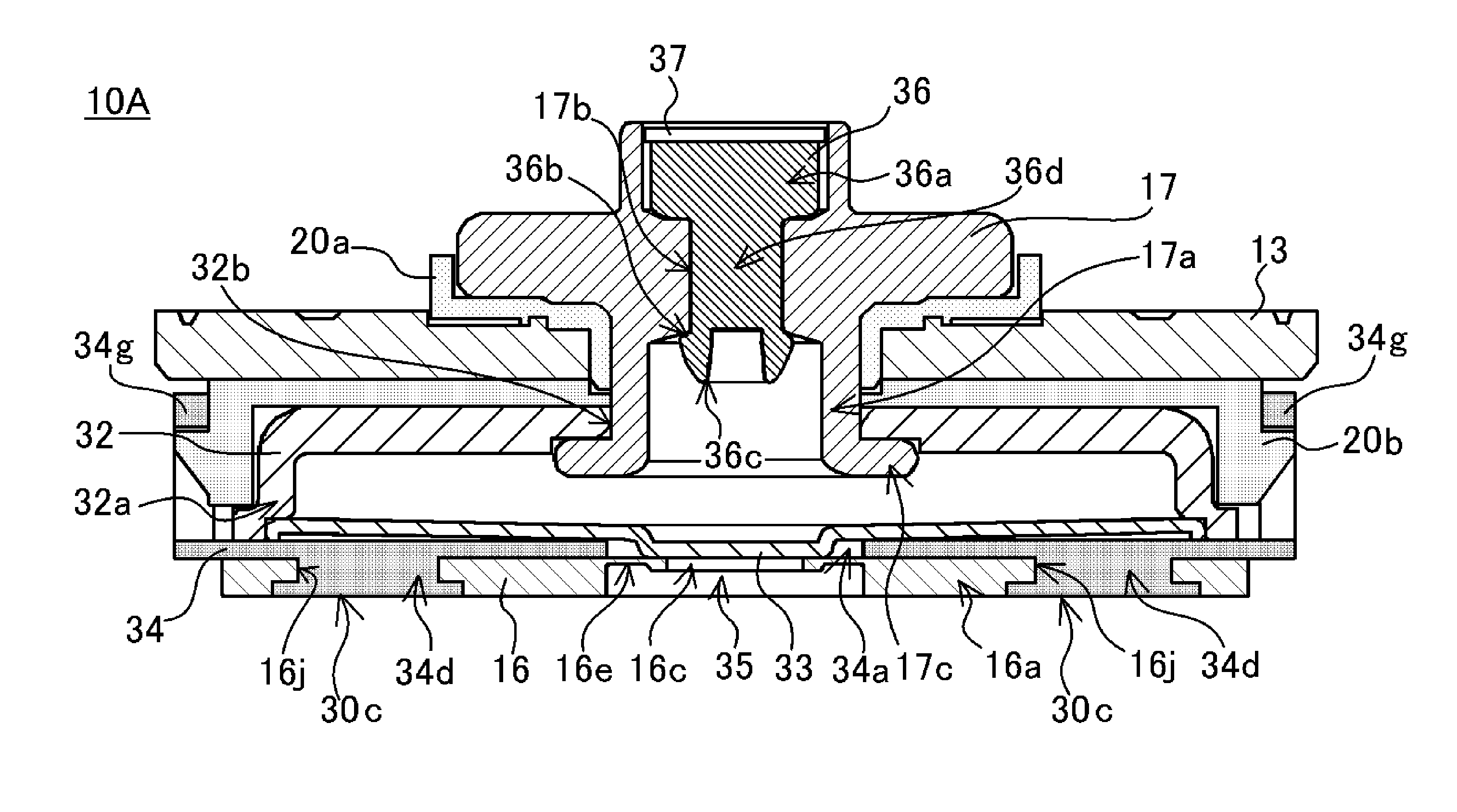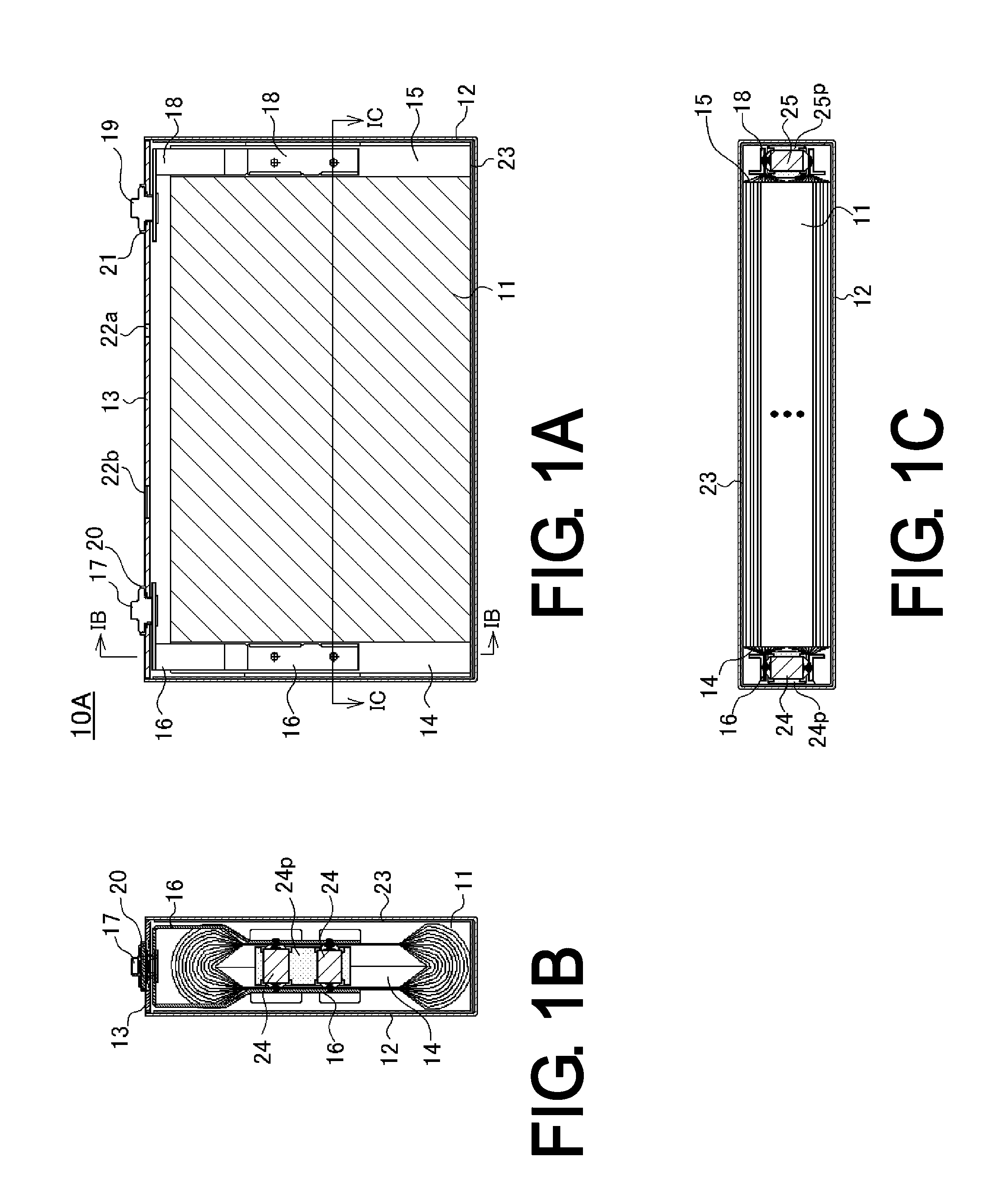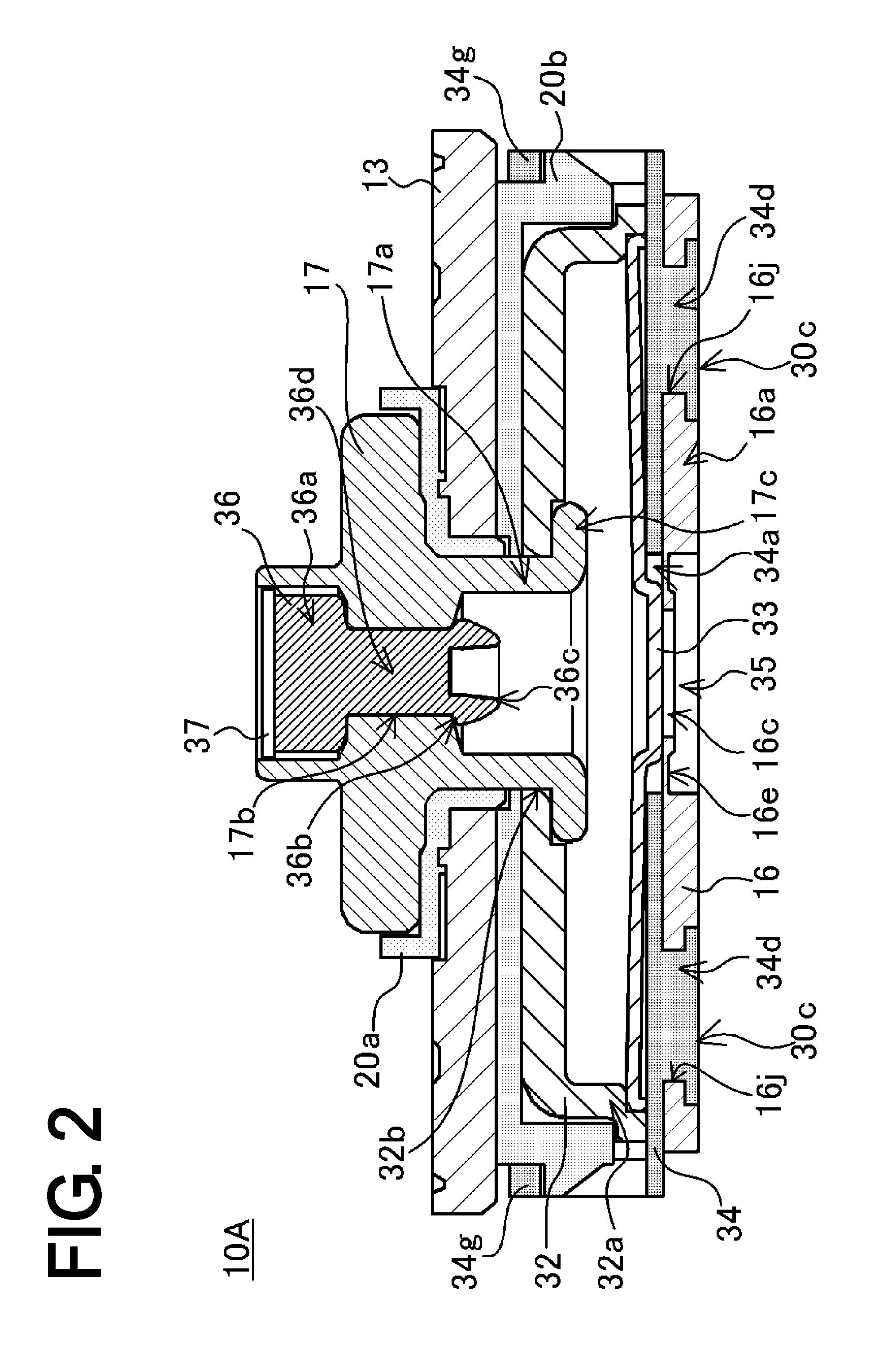Prismatic secondary battery
- Summary
- Abstract
- Description
- Claims
- Application Information
AI Technical Summary
Benefits of technology
Problems solved by technology
Method used
Image
Examples
first embodiment
[0069]First, the prismatic nonaqueous electrolyte secondary battery of the first embodiment 1 will be described using FIGS. 1 to 5.
[0070]The prismatic nonaqueous electrolyte secondary battery 10A of the embodiment has a flattened wound electrode assembly 11 in which positive electrode plate and negative electrode plate are wound together with separators (all omitted from the drawings) interposed. To fabricate the positive electrode plate, a positive electrode active material mixture is spread over both sides of a positive electrode substrate of aluminum foil, and the resulting object is dried and rolled, then is slit at one end so that the aluminum foil is exposed in strips aligned in the lengthwise direction. To fabricate the negative electrode plate, a negative electrode active material mixture is spread over both sides of a negative electrode substrate of copper foil, and the resulting object is dried and rolled, then is slit at one end so that the copper foil is exposed in strip...
embodiment 2
[0102]The foregoing description of the prismatic nonaqueous electrolyte secondary battery 10A of Embodiment 1 sets forth an example where the first region 16a of the positive electrode collector 16 is wide, two second regions 16b are formed in mutually opposite positions with respect to the first region 16a, and two third fixing portions 30c are provided, one on each side in a direction perpendicular to the centerline c. However, there exist prismatic nonaqueous electrolyte secondary batteries that are narrow in width and have only one second region formed in a positive electrode collector. Thus, the prismatic nonaqueous electrolyte secondary battery 10B of Embodiment 2 is described below, using FIGS. 6 and 7, in which the first region 16a of the positive electrode collector 16 is narrow and only one second region 16b is formed.
[0103]FIG. 6A is an opened-out front view of the positive electrode collector of the prismatic nonaqueous electrolyte secondary battery of Embodiment 2, FIG....
PUM
 Login to View More
Login to View More Abstract
Description
Claims
Application Information
 Login to View More
Login to View More - R&D
- Intellectual Property
- Life Sciences
- Materials
- Tech Scout
- Unparalleled Data Quality
- Higher Quality Content
- 60% Fewer Hallucinations
Browse by: Latest US Patents, China's latest patents, Technical Efficacy Thesaurus, Application Domain, Technology Topic, Popular Technical Reports.
© 2025 PatSnap. All rights reserved.Legal|Privacy policy|Modern Slavery Act Transparency Statement|Sitemap|About US| Contact US: help@patsnap.com



